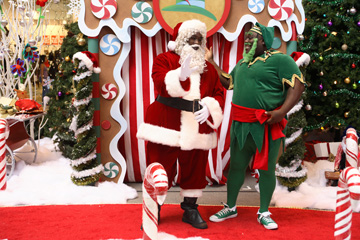
The author and star of this year’s most popular and critically acclaimed independent film talked with me about “Juno,” a smart, funny, touching film about a pregnant teenager who decides to give her baby to a childless couple. This is the first screeplay for Diablo Cody (born Brook Busey), whose book and blog about her life as a stripper first brought her to the attention of Hollywood. Ellen Page’s astonishing performance in “Hard Candy” as a young girl who turns the tables on a predatory pedophile showed her to be an actress of formidable range and talent. There could not be a better match of performer and material and it was clear that they have become close friends.
NM: I am a big fan of your director, Jason Reitman, who wrote and directed Thank You for Smoking .
.
EP: Working with him in the kind of atmosphere he creates is just lovely, awesome. He is extremely assured, he knows what he wants, but he is also unbelievably collaborative. And he has an enormous heart, only good intentions, there’s only goodness with Jason.
DC: I agree on all counts. It’s very rare actually. It’s very rare that you meet somebody who has that incredibly sharp mind and is also incredibly compassionate. You don’t see those qualities paired in a lot of people, and Jason has that elusive combo. He is a great filmmaker and has a keen comic timing, which is something that is evident in his first movie as well. Juno is a movie where he really wears his heart on his sleeve as a director. As a writer it was amazing to work with him because he is such a generous collaborator.
NM: It’s impossible to imagine anyone else in the role. Ellen, you seem perfectly cast as the stunningly self-possessed but very vulnerable heroine. I was especially moved by the scene where she finally lets go and sobs.
EP: Ever since first reading “Juno” and Juno kind of entering my life, I immediately fell head over heels in love with Diablo, the script, with Juno, I became obsessed. With regards to that scene, Juno definitely hides a lot in what she projects as herself in her kind of sarcastic wit and what have you, but the reality of the situation is that it is a bit of an extreme situation, even though Juno in the film deals with it in such a refreshing way. There’s the kind of relationship she hasn’t had with her mother, literally abandoned by her mother, as she develops this connection with the baby that is growing inside her along with Vanessa’s love for that, when it all starts falling apart, it’s absolutely devastating for her. In that moment, when she’s alone, she allows herself to experience that devastation at that point.
DC: Ellen is such a strong actor I’ve seen that people sense a connection between her and every character she plays. I like to believe in my heart that she has a special connection to Juno, but that’s just talent, baby.
EP: I think the reason that Diablo’s script is so awesome and people are connecting to it is so many elements of it are completely unexpected and that is so refreshing. People, especially these days, are afraid to take risks. Mind you, every year, it is the people who do take those risks who are successful, the people who have had those really long careers are the ones who have dared to have a sense of integrity and individuality. And I think that’s something Diablo really did with this script. So you have Jennifer Garner giving an incredible performance, just outstanding. And Allison Janney and JK Simmons, it’s full-on pandemonium extravaganza of awesome individuals.
(more…)

